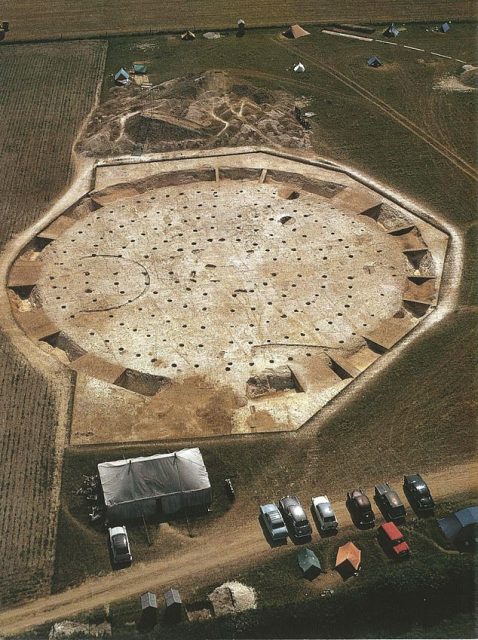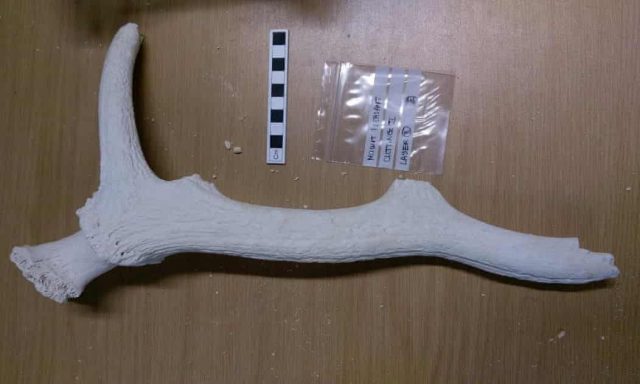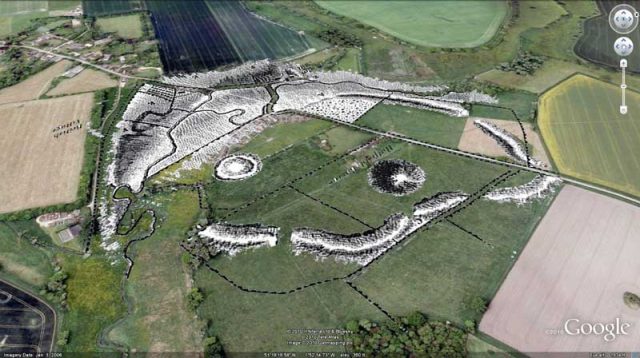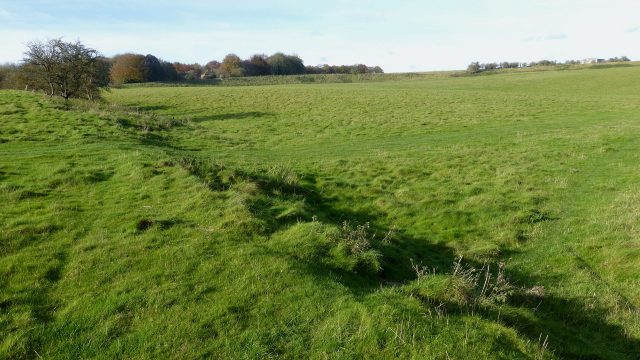Mega Henges: Many of us were taught that the Stone Age was filled with hairy cavemen who didn’t have a lot going for them. In fact, the many henges around England attest to the building skills of Neolithic people and at about 2500BC, just before Europeans arrived in Britain, even had a big construction boom.
There are five mega henges in southern England including a henge at the Mount Pleasant Neolithic site near Dorchester, Dorset.
It was built before Stonehenge and consists of a large circle where people went for rituals with large stones and perhaps a wooden structure in the center.

A wooden fence made from tree trunks surrounded the henge as well as a bank and a ditch according to theguardian.com. The size of the round concentric henge is enormous, almost sixty two thousand square feet and it was built entirely by people using deer antlers as digging tools.
The Mount Pleasant Neolithic site was first excavated in the early 1970s and researchers believe the time to build the site took anywhere from thirty five years to one hundred and twenty five years with multiple descendants taking over the work but now they suggest it was built WITHIN 35 years.

According to lead researcher and lead author of a research paper Tempo of a Mega-henge: A New Chronology for Mount Pleasant, Dorchester, Dorset found at cambridge.org, Susan Greaney of Cardiff University’s School of History, Archaeology and Religion remarked, “The building of Mount Pleasant would have involved a huge number of people digging out the enormous ditches with simple tools like antler picks.

This was right at the end of the stone age, just before people came from the continent with metal goods, new types of pottery, new styles of burial and so on…” Because dating objects was no where near as effective in 1970, archeologists have been able to use radiocarbon dating to determine that it was probably built in the 26th century BC.
The other mega henges in southern England include Marden Henge, the largest found to date at forty acres which was surrounded by a fence of ten foot tall tree trunks.

According to nationalgeographic.com, Jim Leary, director of the archaeology field school at the University of Reading, partnered with Historic England and launched a three-year excavation of Marden Henge in 2016.
Artifacts such as an early Bronze Age burial, arrowheads for exhibition rather than hunting and the remains of over thirteen pigs which were most likely cooked and eaten there were discovered. The burial was that of a teenager interred with an amber necklace about four thousand years ago.
Livescience.com tells us of a mega henge discovered about two miles from Stonehenge and fifteen times larger beneath the banks of Durrington Walls.

The stones stood almost fifteen feet tall before they were damaged over four thousand years ago when they were buried to form earthen embankments to surround the site. The henge is surrounded by a fifty eight foot long ditch that takes up a mile of land around the henge.
According to megalithic.co.uk, a stone circle in Wiltshire was discovered in 1999 and owns the title for the largest henge circle in the world. The surrounding embankment is almost a full mile long and the inside area is just over twenty eight acres. It is estimated that it took 1.5 million man hours to construct.
Silbury Hill in Avebury, while not a henge in the traditional way, is a part of the Stonehenge complex and is believed to have been built around 2400BC.
https://www.youtube.com/watch?v=irDG6bjU_wM
It is an artificial mound equal to the size of the Egyptian pyramids but no one knows its original purpose. There are no burials and the mound is just dirt and chalk. More materials were added over the years adding to the height and the ditch enclosing the mound shows evidence of backfilling and cutting.
On three separate occasions the hill was excavated with tunnels running horizontally and vertically with nothing of interest found.
Another Article From Us: Mushroom Picker Finds 3300-Year-Old Bronze Age Sword
Because of the lack of knowledge of the consequences of tunneling through the mound it almost collapsed in 2000 when the tunnels gave way. Now researchers are using less invasive forms of archeology to study the mound.
